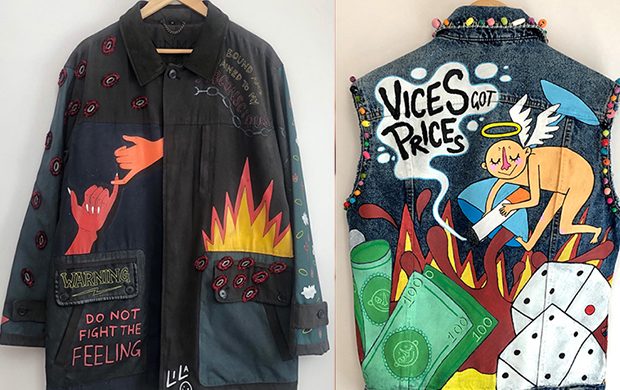As reported on un.org the world’s population is projected to reach 8.5 billion by 2030, 9.7 billion by 2050 and exceed 11 billion in the year 2100. With the exception of our increasing population having undeniable impacts on the ecosystem and our overall way of life, the more immediate and personal factors we must consider are the effects we, the human race, have and continue to contribute towards global warming.
According to britishcouncil.org the UK’s Fashion industry is worth £26 billion and provides around 800,000 jobs to the economy. Still, in light of this, in the UK the average person wastes 3.1kg of clothes per year, with only 0.3kg of those wasted clothes actually being recycled (statistics from circularonline.co.uk) and the rest sadly ending up in landfills. Living with the perception that buying the latest trends at lower costs is somehow ‘value for money’ is undoubtedly one of the main causes globally for the high turnover of clothes and textile wastage.
So how do we go about reducing our carbon footprint? Where do we start? So many questions with so many answers, at times you can feel like a little fish in a big pond. But don’t fret, as I’m in the same pond with you!
On my quest to enlightenment, one of my many goals is to educate myself more on SME brands who care about sustainability and, practise the art of ‘give-a-damn-ability’ with an ethos that expresses a different ‘air of creativity’.
While exploring ASOS Marketplace I stumbled across a handful of cool and quirky brands on the platform, and thought: what better way to find out more about sustainable fashion and being a small brand in a big industry than to go straight to the source!
Check out my Q&A below with some of these brands as we discuss the impacts of COVID-19 on their business, thoughts on sustainability and fashion and tips/advice for new creatives.
Threaded Tribe

So, sustainability in fashion has always been a hot topic of conversation. In my opinion, as we try to ease back into “normal life”, being more sustainable with our wardrobes is more important than ever. As a designer, what are your thoughts on this?
Sustainability is the way forward. The fast fashion industry is killing the planet! What will we do when our planet ceases to exist? A lot of big fashion brands use cheap, low-quality materials on purpose, subconsciously forcing impressionable customers to keep on buying more clothes unnecessarily. And where do all these unwanted clothes end up? In a landfill site.
Investing in clothes and accessories that have longevity and are made from recycled materials is so important. During the manufacturing process, a lot of these fast fashion factories use harmful chemicals in their dying processes which has a negative impact on the climate. Not to mention that a lot of the employees who work in these factories are paid appallingly for their labour. Just a handful of reasons in a deep ocean of why we shouldn’t support these big brands.
Quality over quantity. Before you click ‘purchase’ on these big brand websites, ask yourself ‘do I really need to buy this?’ Recycling, reworking, and upcycling on YouTube have really peaked over the past few years. We all need to invest more in well-made clothes that have good longevity, this way you can customise them when you want and create new outfits and clothes without harming the planet.
During lockdown, did you notice any changes in the behaviour of some of your customers?
I am thrilled to say I haven’t seen much of a difference. Spending has remained the same. Speaking from a small one-woman brand, I was apprehensive about the impact COVID-19 would have on people’s spending habits during this time. However, this period has shown that some customers have had more time on their hands than ever before, and with the current mood being moderately low I feel online shopping has become a new past time and release of positive energy. Purchasing has brought back some excitement and something for people to look forward to during lockdown. With physical shopping having been restricted for so long now, it has resulted in an increase in online shopping and customers are showing more appreciation towards products and the businesses that sell these products.
I feel as though my customers have continued to order my products because they love the items I make, but also for the enjoyment of knowing that they are supporting a homerun ethical business.

You have an old t-shirt, a pack of safety pins, fabric scissors and some fabric glue. Can you give an example of something new you would make using just these materials…?
A ‘YAS QUEEN T-SHIRT’ and here’s how you make it…
- Place t-shirt on a flat surface. Use the Fabric Scissors to cut off the hem and hems on both sleeves to make a more “rough and ready look”.
- Using your fingers run the t-shirt hem in one direction to warp and misshape the t-shirt slightly giving a more frayed hem look.
- Use the safety pins to spell “Yas Queen” make sure to use capital letters. Once you are happy with the position of the pins, take each individual safety pin and start pinning them in place through the t-shirt fabric.
- Optional – Use a little fabric glue to seal the frayed hems if you wish and, to secure the safety pinheads in place
Threaded Tribe – @threadedtribe; www.marketplace.asos.com/boutique/threaded-tribe
Hood Baby

I doubt there are many people who have not heard of ASOS and their sister platform ASOS Marketplace. How has ASOS supported you during the lockdown period?
ASOS has supported me and many others by waiving the cost of the monthly rent to sell on their platform. This has been helpful considering sales have slowed down drastically for my business. They have also added a feature in which designers can do flat lays and upload those rather than modelled photos.
With extra time to spare, a lot of people have taken up new hobbies. As a creative, what tips/advice could you give to someone who has recently started sewing and customising?
Be open and receptive to new ideas. YouTube is your friend and probably is the greatest teacher now more than ever for these sorts of hobbies, especially for those of us with limited income due to the current climate. Lastly, I would say just remember to try new things. This will always set you apart from the crowd.
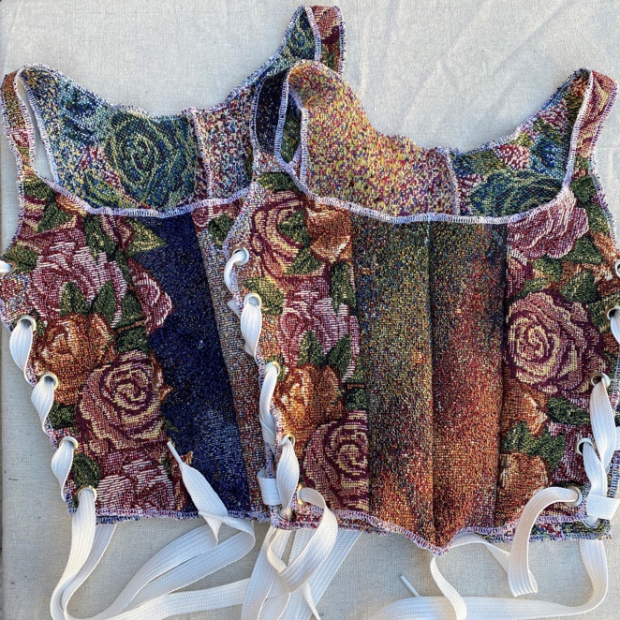
I guess we can’t ignore the elephant in the room: for a moment the whole world was uncertain on when we would be able to get back to “normal life”. How did this period of uncertainty affect your business?
It affected me in the sense that it made me really rethink my whole production process. When shops, stores and businesses were open, I would source fabrics and materials at flea markets, which is just one example of an establishment that has yet to open. So, I’ve had to get creative with what I already had before the whole world got turned upside down.
Hood Baby @hoodbabyla; www.marketplace.asos.com/boutique/hood-baby
HANDS

What are your thoughts on the fashion industry’s response to COVID-19?
I think the fashion industry’s response to the pandemic has been sufficient. However, I do also feel that a lot of businesses who have been severely affected by this crisis are going to have to change the way they have been traditionally operating as a business. Customers are craving innovation and excitement now more than ever, especially when it comes to purchasing new clothes. For example, Hanifa (@hanifaofficial) a Congolese fashion designer, has set the pace for the future of runway shows with an incredible virtual runway show which she held in May via live stream on Instagram.
As a business owner, how have you been affected by the COVID-19 outbreak?
As an accessory brand specialising in handmade beaded bags, I have always been prepared when it comes to materials and resources, but in all honesty, my business has well and truly picked up more during the pandemic. I have been receiving orders from all over the world!
With social distancing being mandatory, extra precautions have been put in place to ensure packaging and handling in customs is being done safely. This has affected me as a business as there have been some delays in getting my orders to customers.
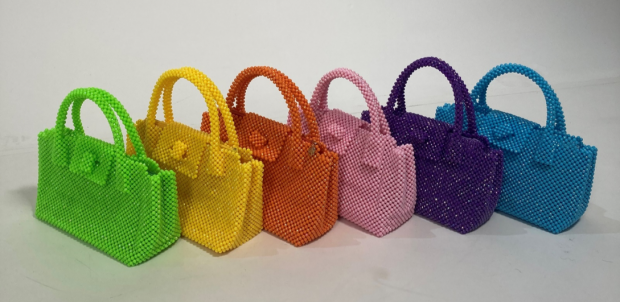
An important lesson you’ve learnt from this whole experience?
The most important thing I have learnt while operating my business during the pandemic is preparation meets opportunity. Being prepared and having patience will have you at the top of your A-Game when everything starts to pick up.
HANDS – @hands.bags; www.marketplace.asos.com/boutique/handsbags
Ally Jacqueline
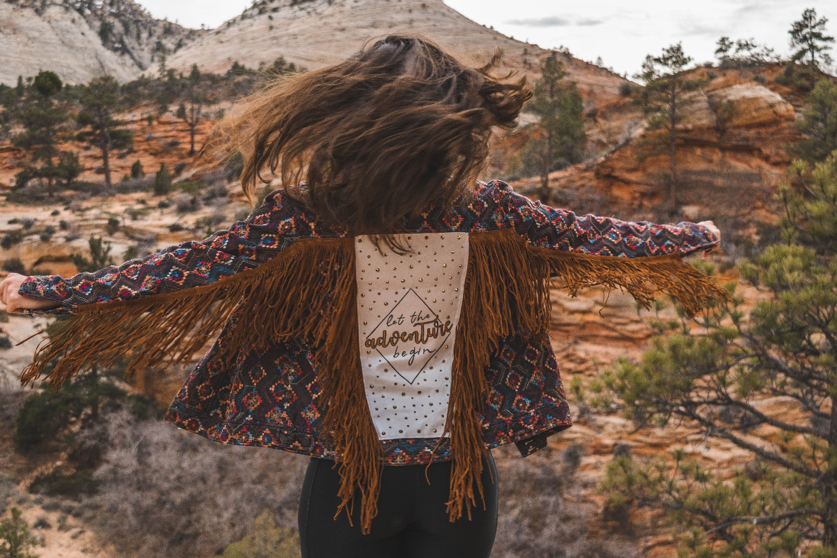
How did the COVID-19 pandemic affect your business?
Last year in December, I made the decision to go from full-time to part-time so that I could focus more on my business. When the world went into limbo early this year, it was pretty scary initially since I had recently committed to investing more time in my small business.
My jackets are statement pieces and tend to be worn at events like weddings, birthdays, and concerts, so it was a big concern of mine that these events would eventually be postponed for a while or worst-case scenario, cancelled indefinitely, resulting in a loss or pause on orders. However, it has been interesting to watch this shift in the wedding industry and witness micro weddings become more and more popular!
Speaking from experience, as a recently married woman myself, it makes me happy to see a shift in wedding trends from big budgets being spent on entertaining large numbers of guests, to instead focusing more on the details that truly matter. From a business perspective, this new trend allows my business to stay relevant. A smaller wedding means more budget for small details and fun statement pieces that will make couples wedding photos really shine!
Sourcing materials has definitely been a challenge lately! Since each of my pieces are made-to-order and have incredibly unique designs, I am not able to stock up on materials like most other businesses who work with factories and/or batch-produce. However, there is always a silver lining, and in this case, mine is that I can be more sustainable with production because I am only purchasing what I need. This has also encouraged me to research alternative ways for sourcing materials.
Shipping internationally has also been a challenge for me since there have been unpredictable delays in customs which has prevented me from being able to provide my international customers with an estimated time of arrival. Even though I was hoping to really ramp up my number of orders this year, I have found that the extra bit of time has still been a great investment! I’ve been able to focus on researching more and setting future goals for my business, e.g. experimenting with new designs, updating my website, and working through my never-ending to-do list!

As a creative, what tips/advice would you give to someone who’s eager to start designing and making their own clothes?
My advice to people who have taken up sewing during this period would be to revisit old clothes from your wardrobe and see if there is anything that you can breathe new life into. Take these clothes apart with un un-picker or carefully with a pair of fabric scissors, and study how they were sewn together. This is a great way to understand how clothes are made.
YouTube should be your best friend in times like these! There are loads of videos online that can teach you new techniques or answer any questions you may have.
My last piece of advice would be to create an inspiration board! Either with printed clippings on an A4 or A3 sheet of paper, or digitally using Pinterest or on apps such as Evernote. I’m always collecting photos of things that inspire me so I can use as inspiration to create new designs!
You have a sewing machine, fabric scissors, an old pair of jeans and fringe trimming. Give us an example of something new you would make using just these materials…
I would make a fun pair of fringe denim shorts or pants! Here is a step-by-step on how to make either:
- Make sure you wash your jeans as you will only want to spot clean them or take them to the dry cleaners after the fringe has been attached.
- Put the jeans on and draw a line with a marker about an inch below where you would like the shorts/pants to end. Side Note: If you are making a new pair of pants, I would recommend a hand length from your ankle and an inch below your fingertips for shorts. Remember, you can always cut off more if you want a different length
- Remove the jeans and fold them in half, so that when you cut it will be the same length on both sides, then cut just above the marker line. Side Note: If you are making shorts you may want to cut at a slight angle so there will be a curve to the cut of the shorts which will make them more flattering. You will want the outside of the leg to be shorter than the inside.
- Flip your jeans inside out and then fold up a small amount of the fabric at the cut to create a hem, then sew it down with your sewing machine.
- Place your fringe trimming along the inside of the hem and sew it in place. Tip: If you have pins to keep it in place that would be ideal but be sure to not let your sewing needle meet the pins otherwise it might snap your machine needle. Try using one of the fun sewing patterns on your machine under the thread settings, so that the thread which is visible on the outside of the jeans will be in a cute pattern! Choose a thread colour that matches your jeans or one that contrasts well.
- Flip your jeans right side out again and ta-da, you are done!!
Bonus Step: I love to add rhinestones, pearls, or boa feathers to the fringe trimming to add an extra element of fun! This can be sewn along the edges or you can use E6000 glue to secure it in place. Very soon I will be releasing a DIY fringe kit which you can use to add fringe to denims or leathers WITHOUT a sewing machine!
Ally Jacqueline – @allyyjacq; www.marketplace.asos.com/boutique/ally-jacqueline-jacquets
Linda Lahtinen
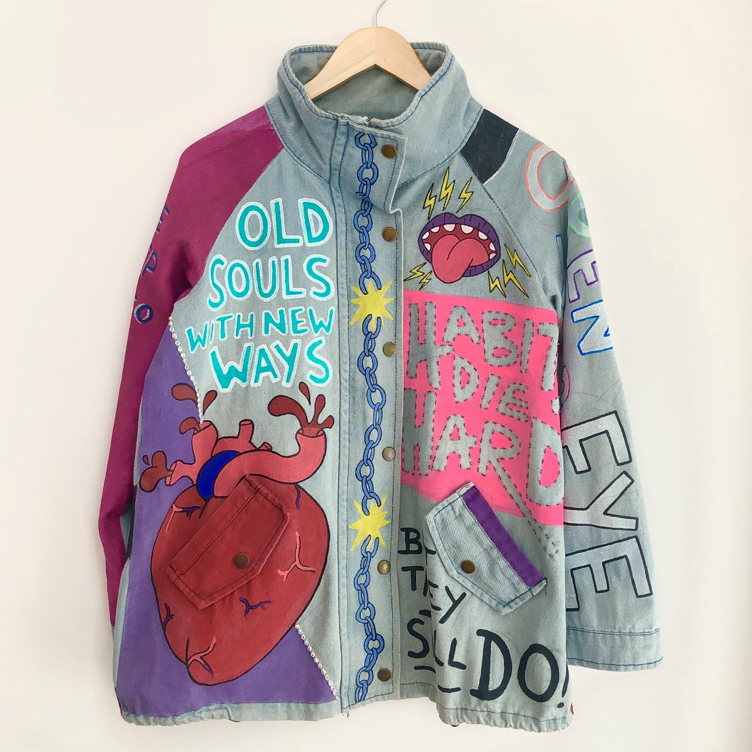
How have you been coping as a designer during COVID-19?
It didn’t make sourcing materials easier! However, because my brand and ethos are so much about sustainability it really pushed me to get resourceful with anything I could find lying around. I sourced a lot of my materials such as haberdashery and paint from online stores, which made online shopping less of a commodity and more of a necessity. I tend to only work on thrifted, vintage, or recycled clothing, so Depop is a great platform to buy items to upcycle. Personally, I prefer and enjoy shopping in person, however, online shopping seems to be the way forward these days which makes me think this period was a trial run for me to get used to the “new normal”.
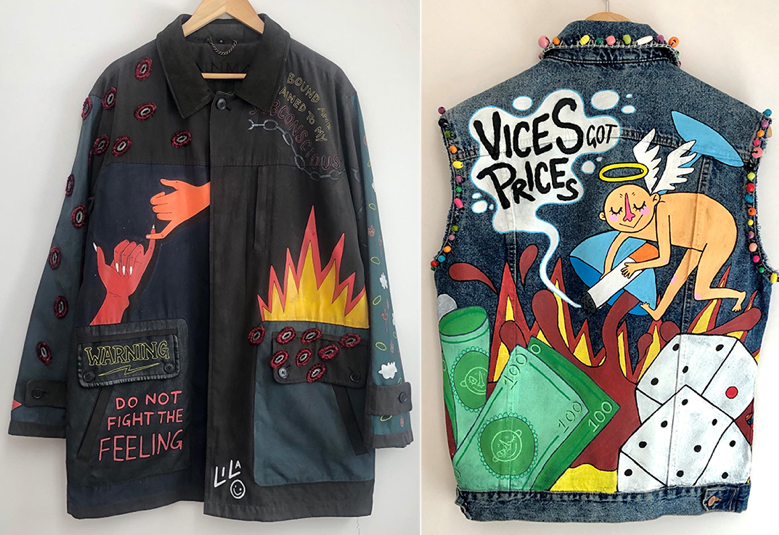
Any tips/advice you can give to someone who is learning how to sew?
Just go for it! Any new skill takes time to master, so choose something where you enjoy the process and not just the end result. When sewing; whether by hand or on a machine, I would always start with loose stitches so that if you mess up you can cut the thread easily and start over. Small stitches tend to make things a lot harder to re-do.
Ok, last question! You have a sewing machine, fabric scissors, an old pair of jeans and fringe trimming. Give us an example of something new you would make using just these materials…
If the jeans still fit, I would try and make them into fringed flares. I’ve always loved flared jeans so I think this would be a cool adaptation of a classic flared jean.
- Cut up the seam of the leg
- Try on the jeans and cut little by little until the fabric splits into a flare size you like. Tip: The higher you end up cutting the wider the flare will be
- Sew the fringe around the hem and flare. The fringe will add length to the jeans so you might want to cut the leg shorter or alternatively you can always wear with a pair of heels. This look is super easy to make and will definitely change the whole look of the jeans. Check out my illustration below which will help you visualise what it would look like.
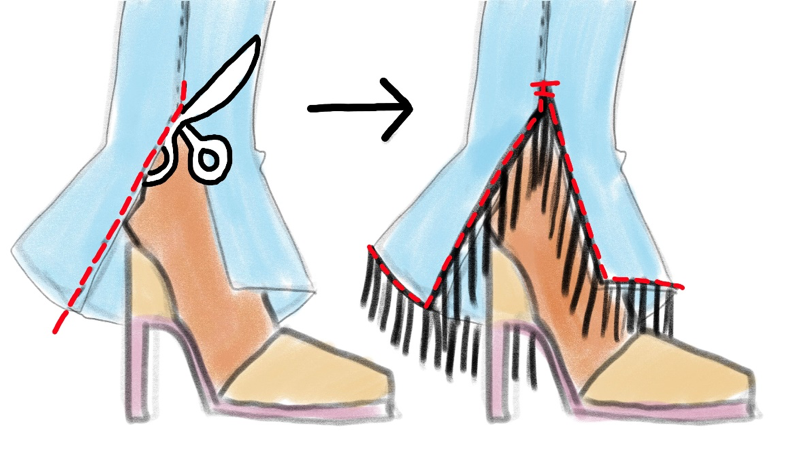
Linda Lahtinen – @lindalahtinen; www.depop.com/lindalahtinen
Article by Ivy Scarlett @writewithivy


